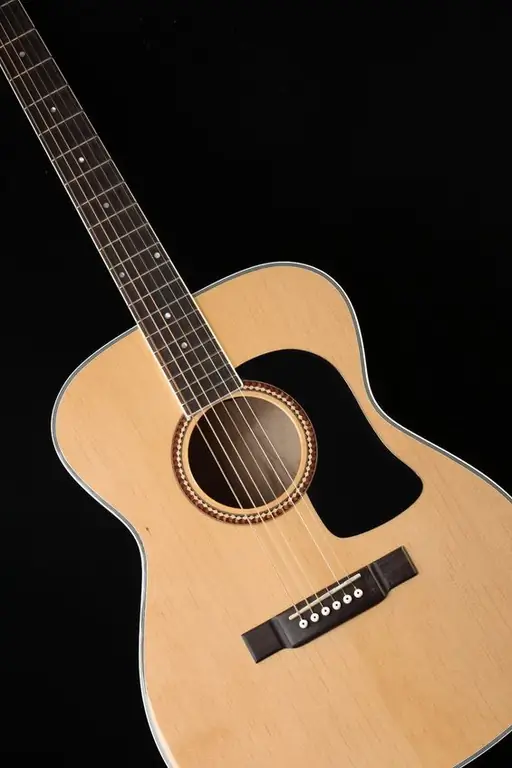A chord is a combination of three or more sounds that are or can be arranged in thirds. There are two main ways to write chords - detailed but cumbersome musical notation and short lettering. Transferring a recording from one system to another requires a little skill.

Instructions
Step 1
All notes in the letter system are designated by a special sign: A - "la", H (in the pop system B) - "si", C - "do", D - "re", E - "mi", F - "fa", G - "salt". In the classical system of Latin I, the note "B-flat" is denoted, in accordance with one of the ancient scales. Major chords are written in capital letters or with the postscript "dur": "Adur" or "A", "Cdur" or "C". Minor chords are written in small letters or have a “mol” postscript: “a”, “amol”, “Amol”.
Step 2
Alteration signs "sharp" and "flat" are designated, respectively, "is" and "es": "fis-mol" - in F-sharp-minor, "Des dur" - in D-flat major. Exceptions for “E flat” and “A flat”: Es, As (the letter “e” disappears).
Step 3
Place a clef at the beginning of the staff (treble, bass, alto as needed). Then, in the appropriate place on the staff, put the bottom note of the chord - it is named after her. For example, in A minor, the bottom note is “la”. In the treble clef, the "la" of the first octave is written between the second and third lines from the bottom.
Step 4
The rest of the notes are placed on the third: “C” between the middle and second rulers from the top, “E” under the top ruler. Location through a step. Note that all notes are positioned between the rulers. At the same time, when writing a chord in an expanded manner, it would be necessary to additionally write the note "A" of the second octave on the first additional ruler from the top.
Step 5
Check the interval composition of the chord. In a minor chord, the lower third is minor (one and a half tones). There is just such an interval between "la" and "do". In an A major chord, a sharp sign would have to be placed before the “C”. The second third in the minor is large (two tones), which corresponds to the interval “C” - “E”. In major, this third would be small ("C sharp" - "mi")
Between the extreme notes ("la" - "mi") there is a pure fifth (three and a half tones).
Step 6
In addition to simple major and minor chords, the so-called minor major seventh chord is used, denoted by a capital letter and a seven in the form of a subscript (for example, A7 is a minor major seventh chord from "A"). It consists of four notes arranged in thirds. The interval composition of such a chord is major third, minor third, minor third. Between the extreme ones there is a small septim (hence the name of the chord). For example, from "la" such a chord is built according to the notes: "la", "c sharp", "mi", "sol".






